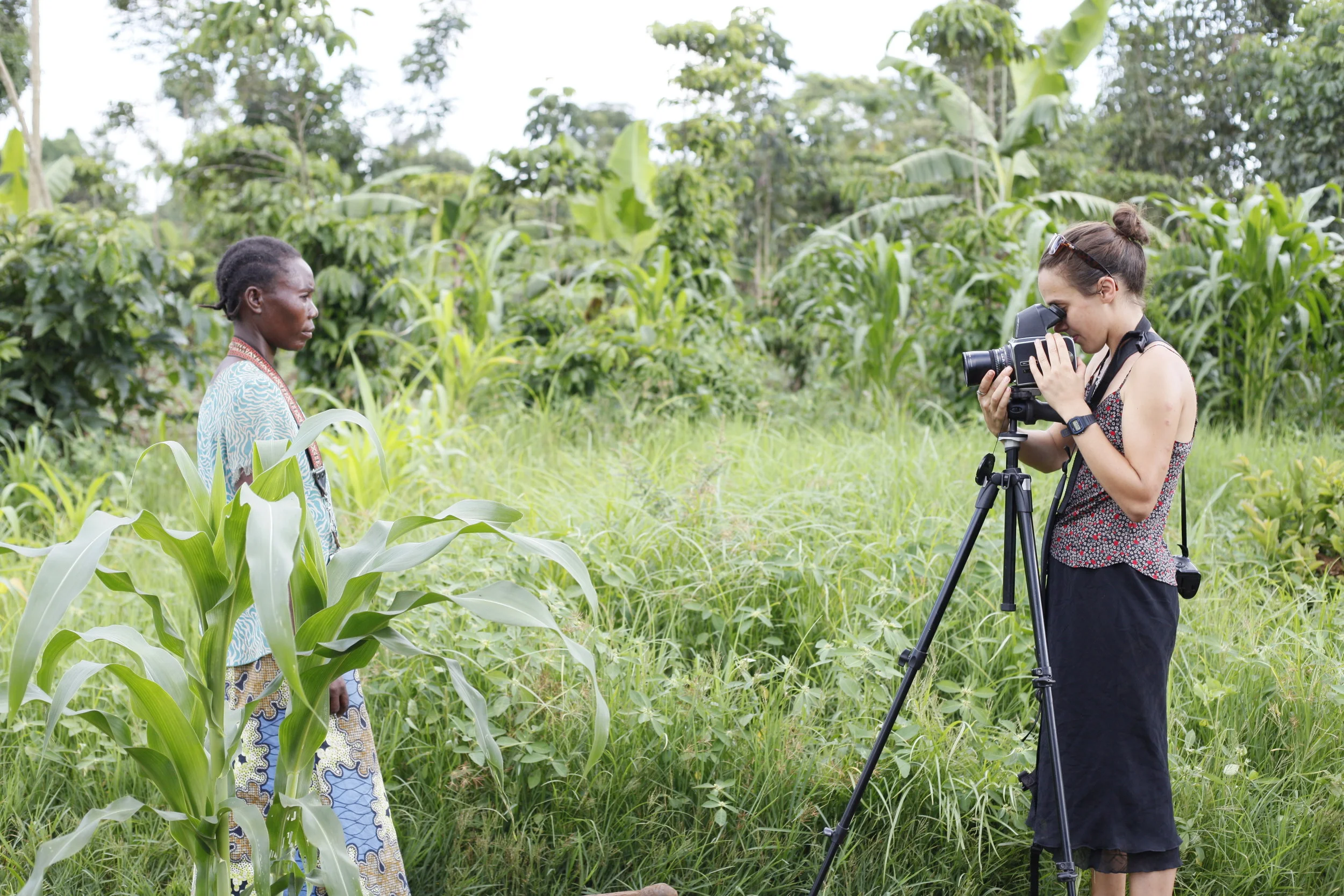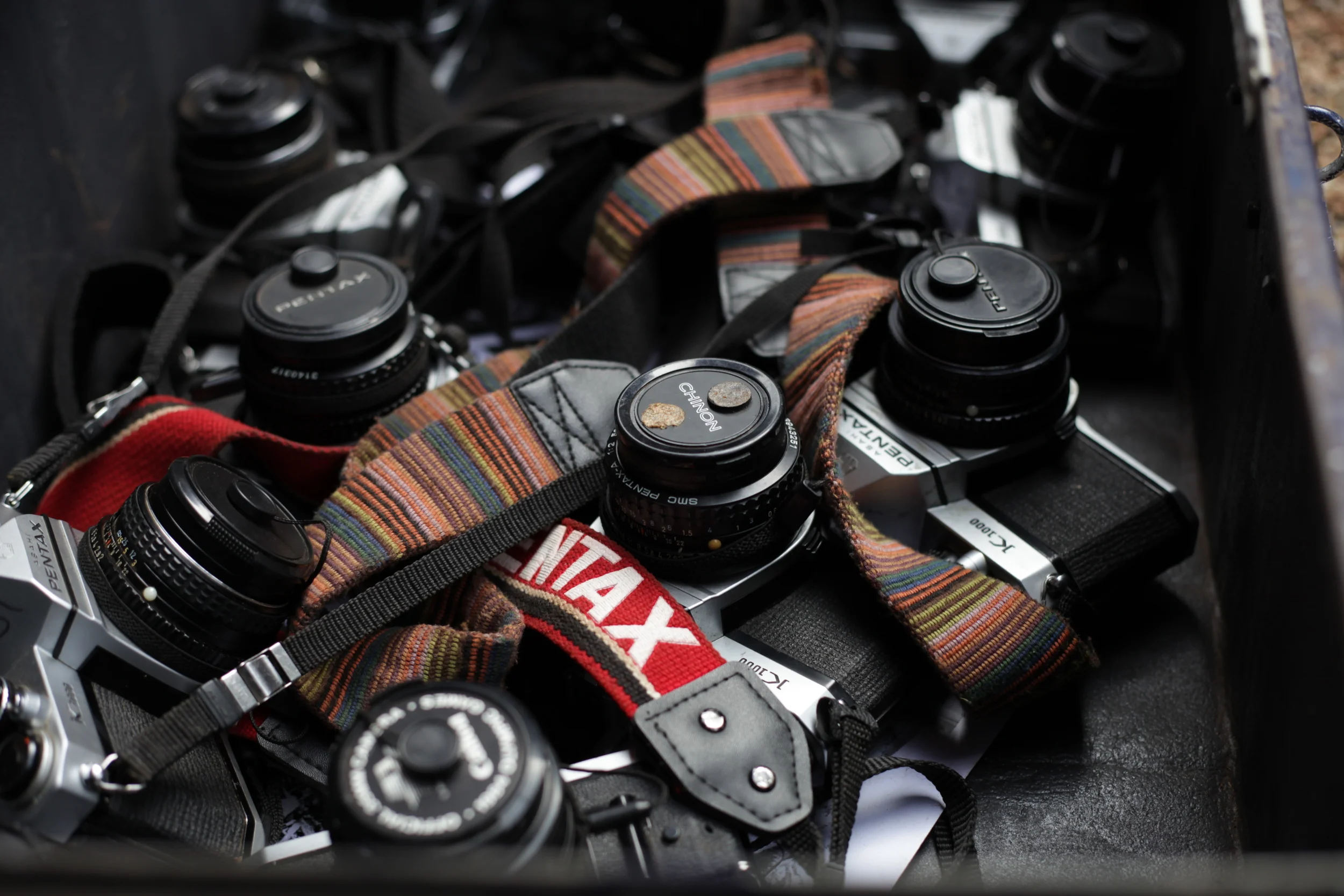
These are the cameras that were distributed to the Wanteete Photo Collective for the project duration. They were primarily Pentax K-1000 models from the 1980s. We shot entirely Kodak Tri-X film. All supplies were generously donated by the Film Photography Project, one of our main sponsors.

Project Director, Louise Contino, on the inaugural day of the Wanteete Photo Collective (WPC). Louise is donning around her neck all of the cameras that were distributed to WPC members for use throughout the project duration.

The BESO Foundation team that provided all logistical support on the ground, from transportation to translation. From left to right: Kaaka Hussein, Aaron Bukenya and Esther Nakityo.

Project Director, Louise Rita Contino, distributing cameras to all of the WPC members.

Lesson Number One: Focusing on your subject! Everyone started at the same horizontal line and then practiced shooting the same subject from identical focal lengths.

The WPC shoots back!

BESO Foundation Project Facilitator, Kaaka Hussein, helping WPC member Athieno Jane learn how to use her camera for her very first time.
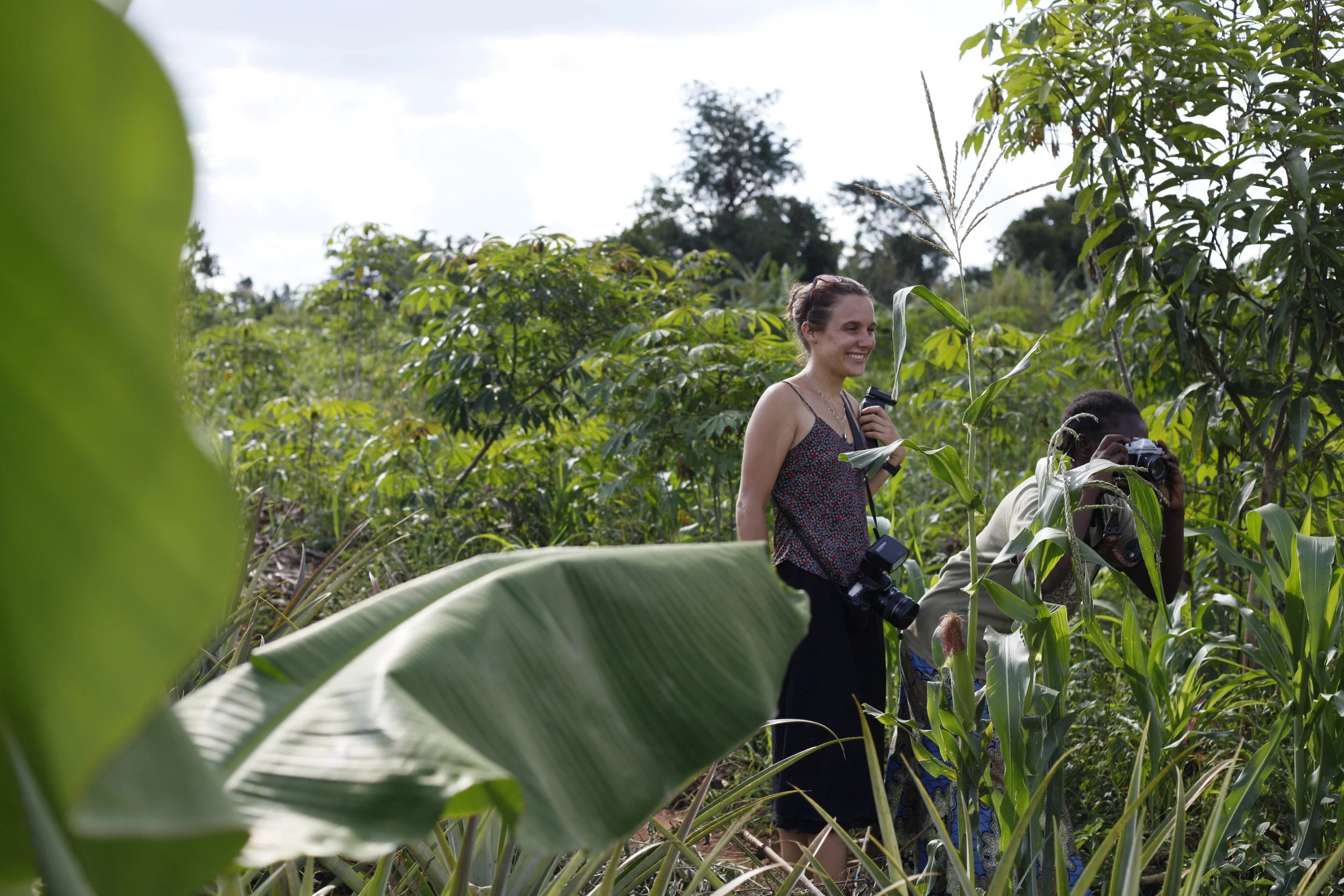
Having a great time putting those photographic skills to work! Shooting in the field with Project Director Louise Rita Contino and WPC Member Babigumira Florence.
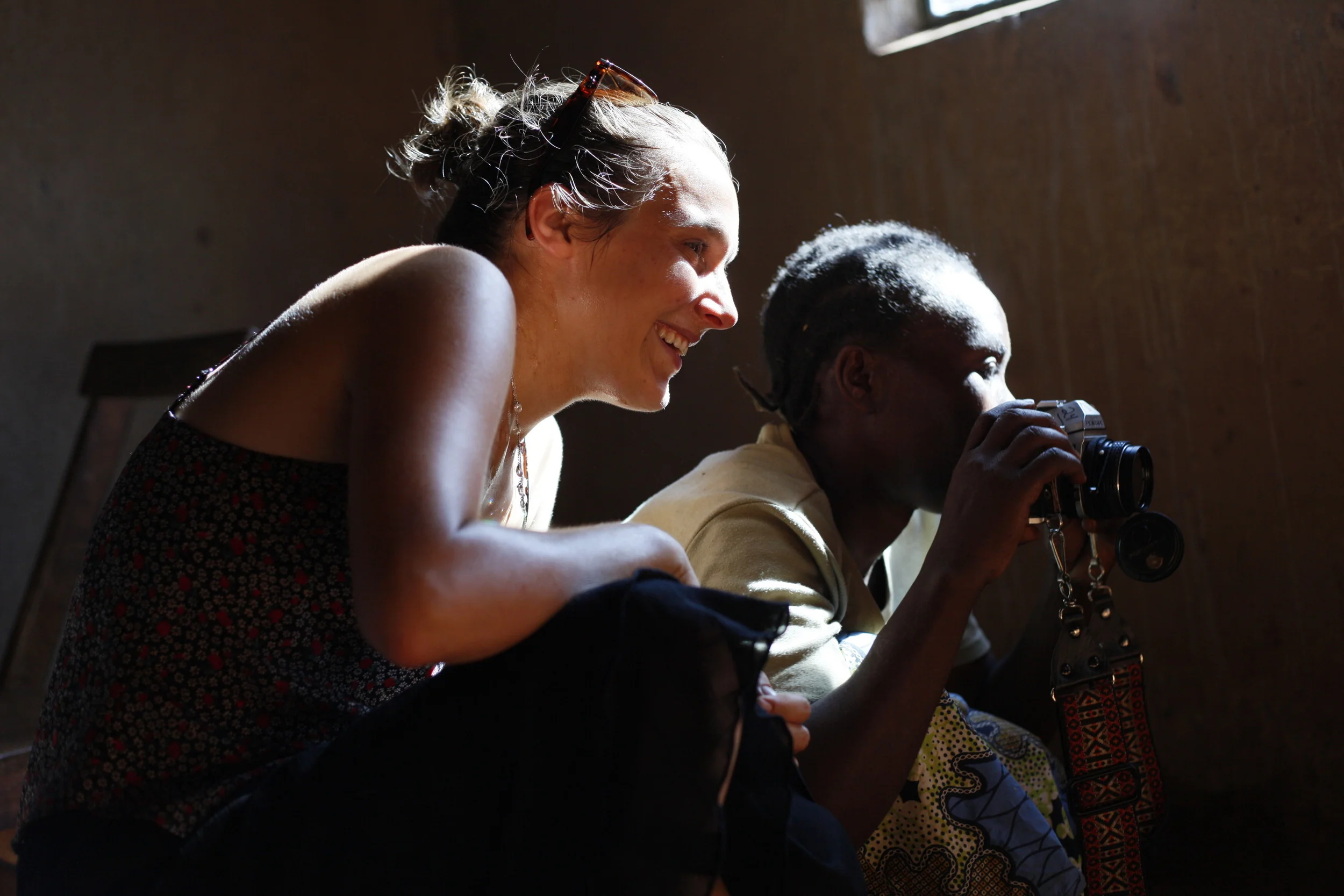
Project Director and field facilitator Louise Contino working one-on-one during a home visit with WPC member Babigumira Florence.
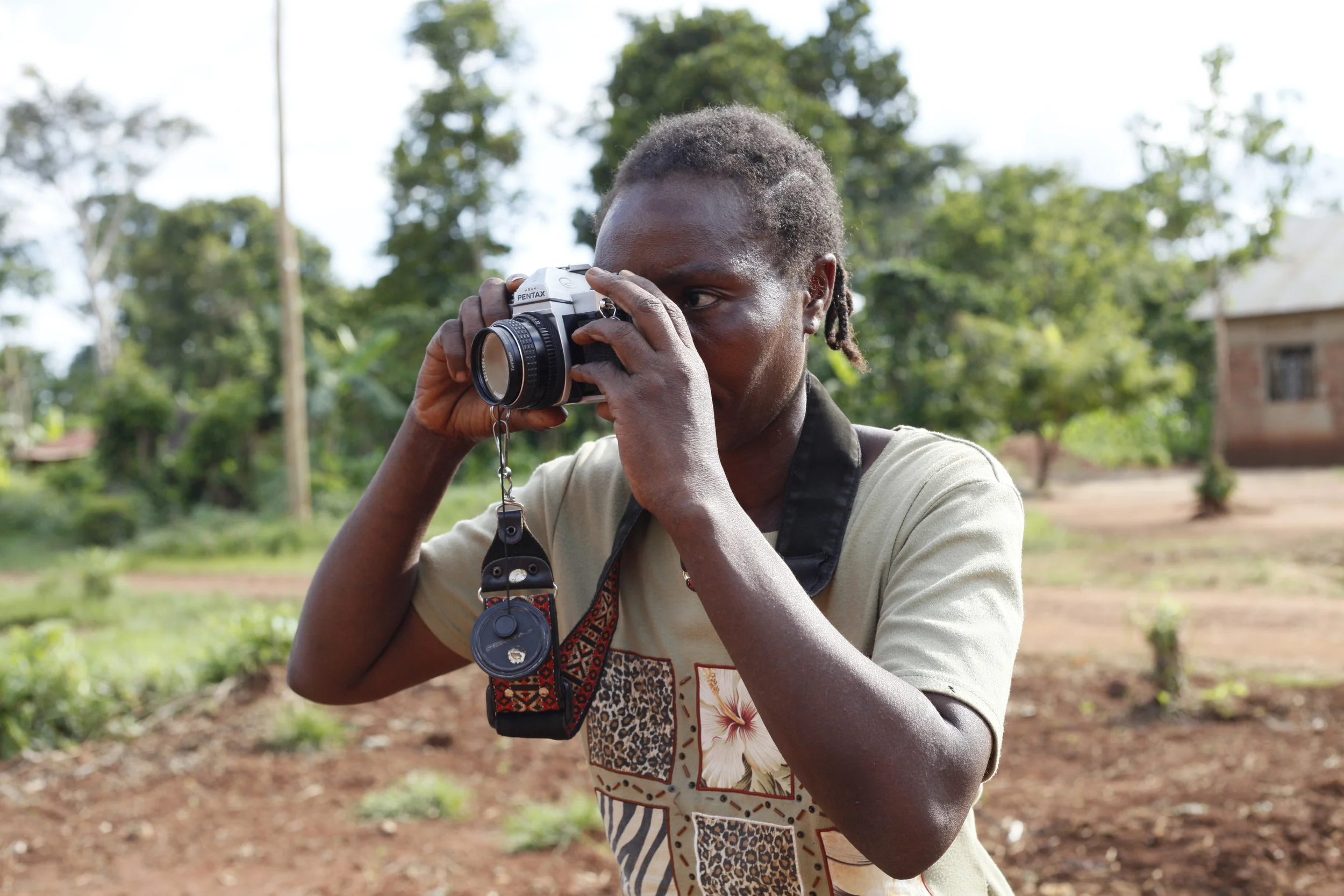
WPC Member Babigumira Florence learning to become confident with using her camera on her own.
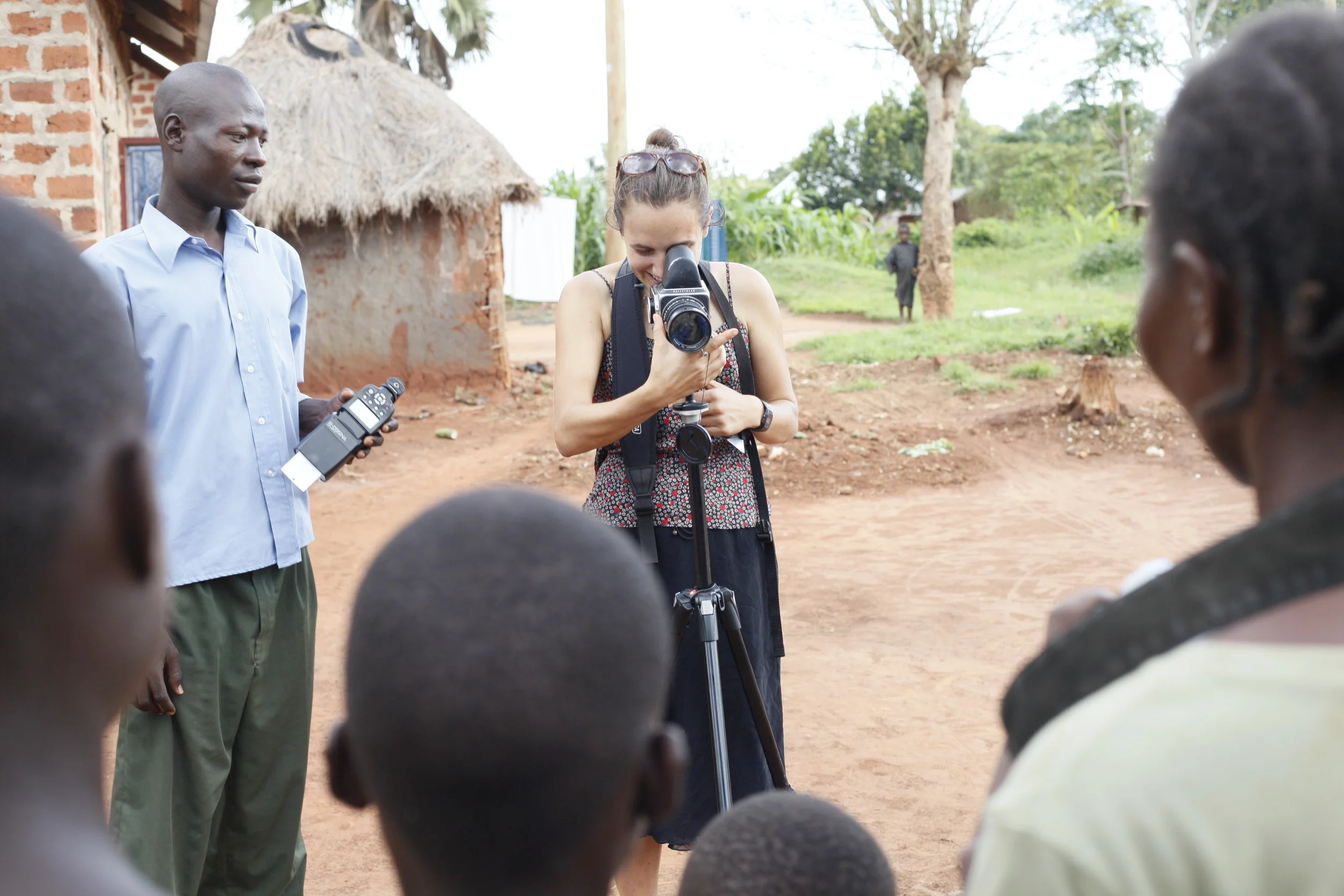
This photo illustrates how the lens was turned both ways in this participatory photography project. WPC members explored what it felt like to be the photographer, casting their glance on a scene or person(s), and what it felt like to be the subject of another's gaze. The Project Director gave each WPC member their own camera and in return asked each of them to pose for an environmental portrait of her design.
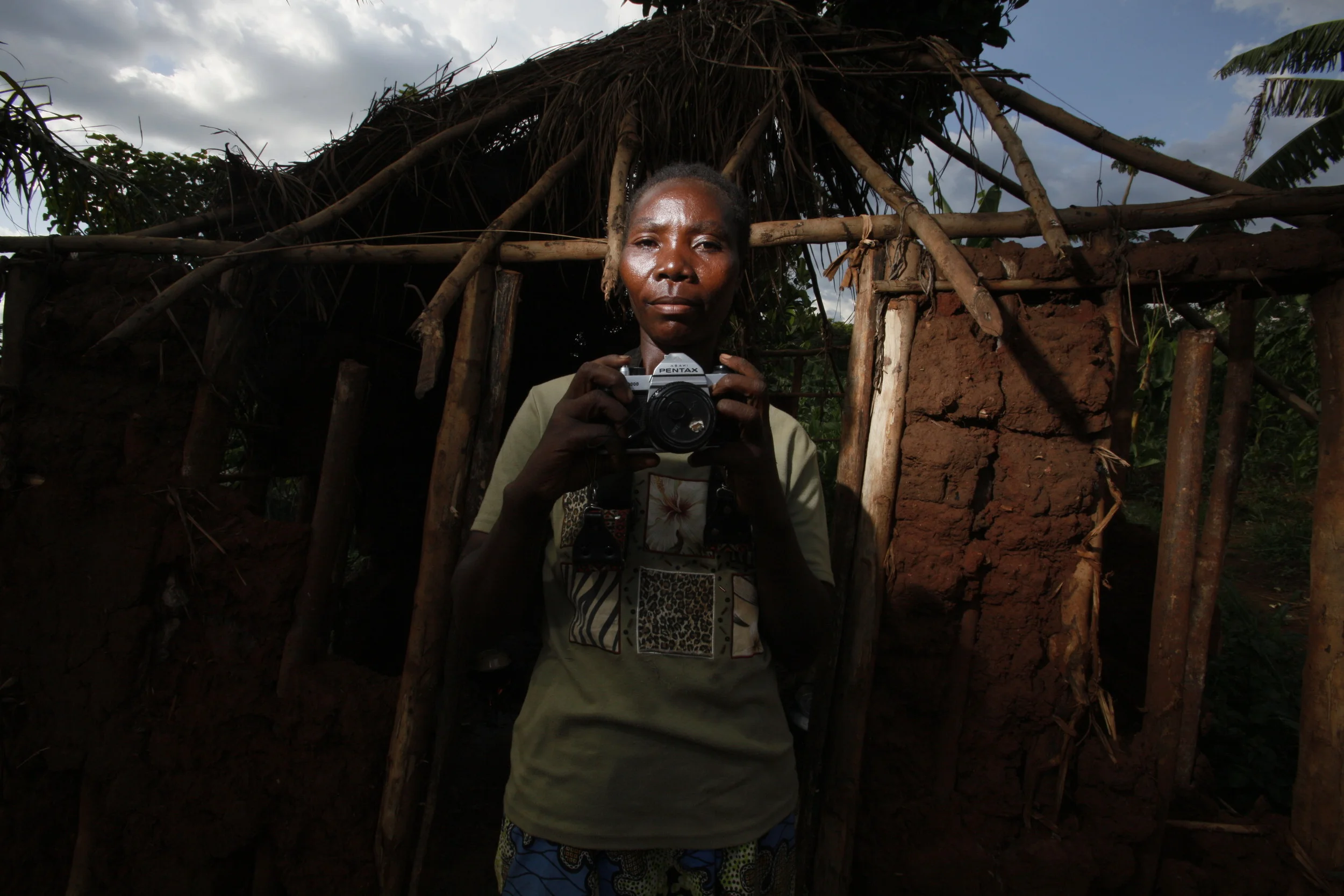
Lesson Two: Learning to look for light, the essence of photography.
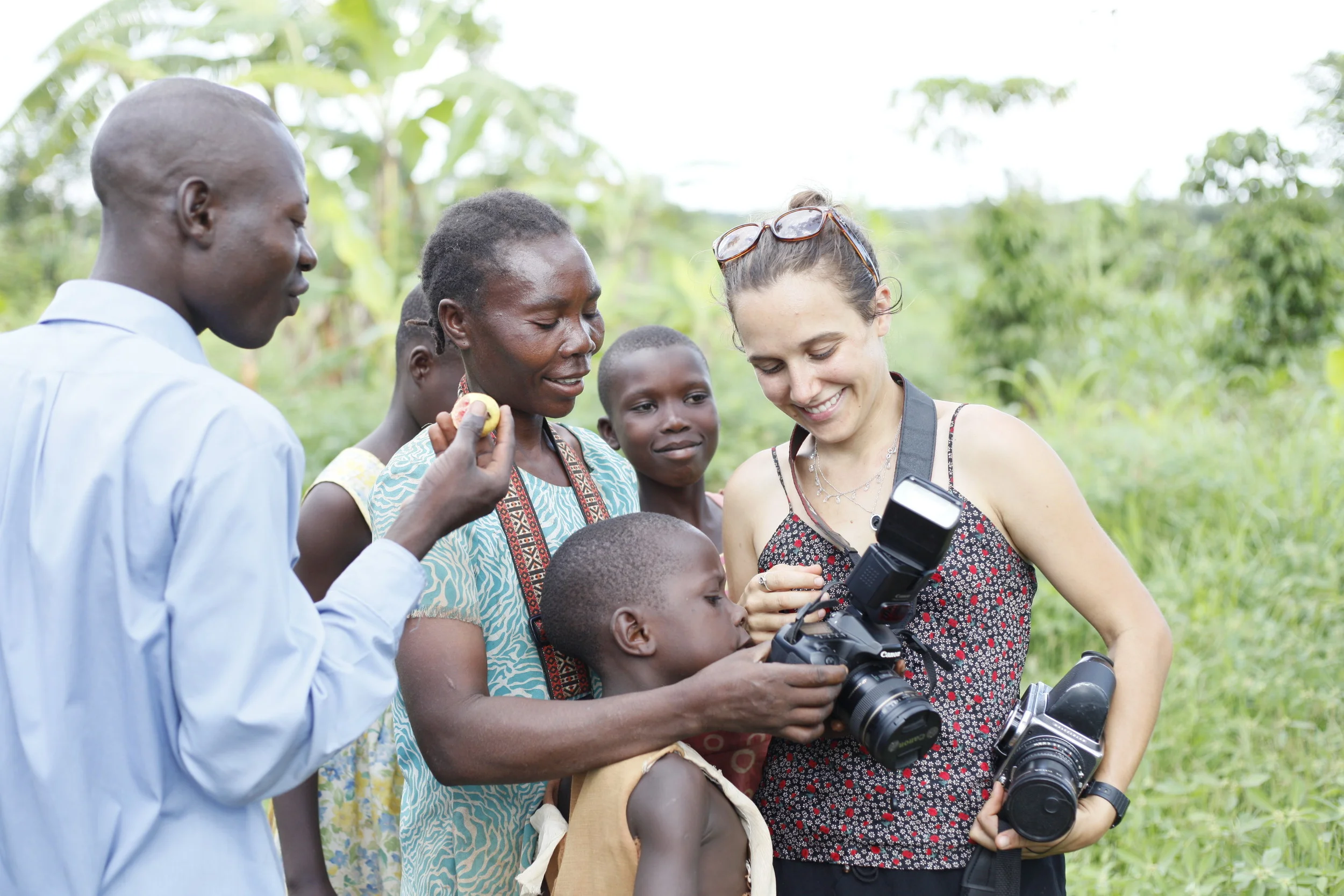
It was always so exciting for participants to view and use digital cameras because of the instantaneous color photos. Black and white analogue film was used for the making of Picturing Wanteete, which made for an entirely different photographic experience than digital. An experience of mystery and delayed gratification. To learn more about the choice to use black and white film, visit the FAQ section.
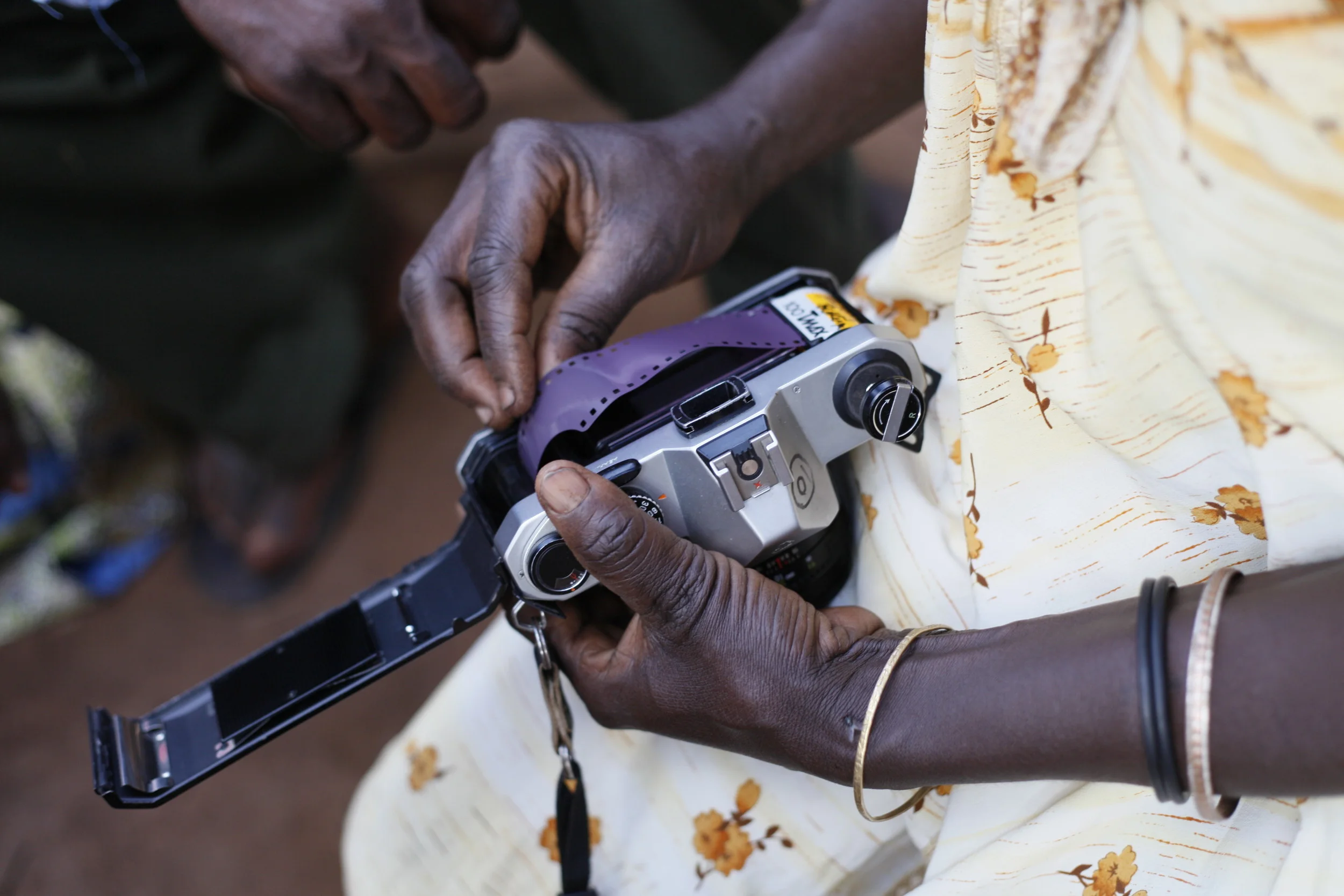
Nalongo Bukenya manually loading a roll of back and white film.

Nalongo Bukenya crafting compositions of her children and grandchildren, her favorite subject.
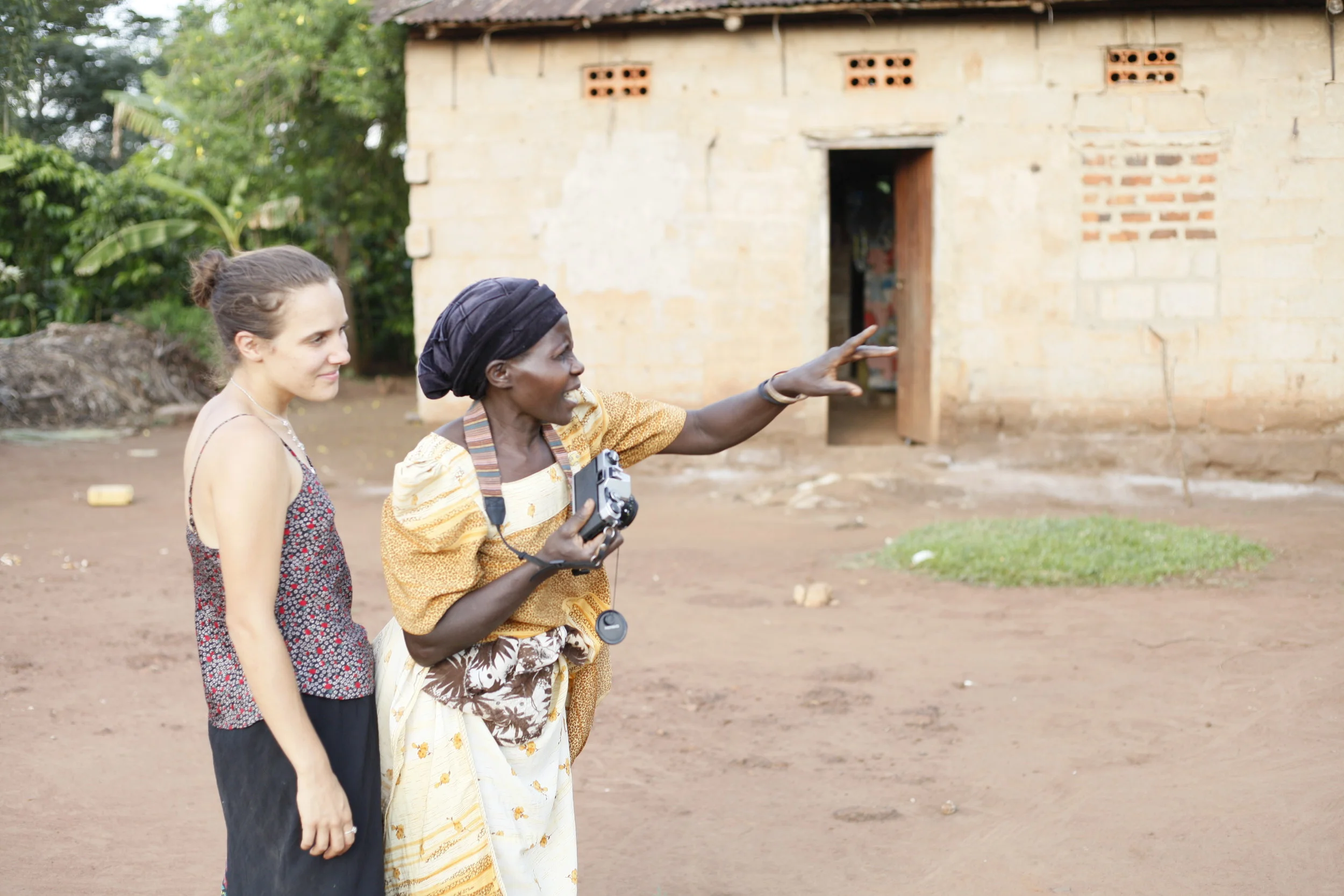
Nalongo Bukenya organizing her subjects, learning how to assume the role of creative director of her own vision.

WPC Members Mawoni Jamadah, Babigumira Florence, and Nalongo Bukenya with Project Director Louise Contino on a "photowalk" through Wanteete. Often Louise would work with a small group of the collective to provide in-depth feedback and help each member develop their range of photographic skills. The work we did to create Picturing Wanteete was always a very collaborative effort. Louise would work closely with members of the collective who could translate from Luganda into English, and relay on other collective members to help bridge cultural gaps and bring Louise in closer into the social worlds of Wanteete. Without such collaboration and inclusion this work would have been impossible to create.
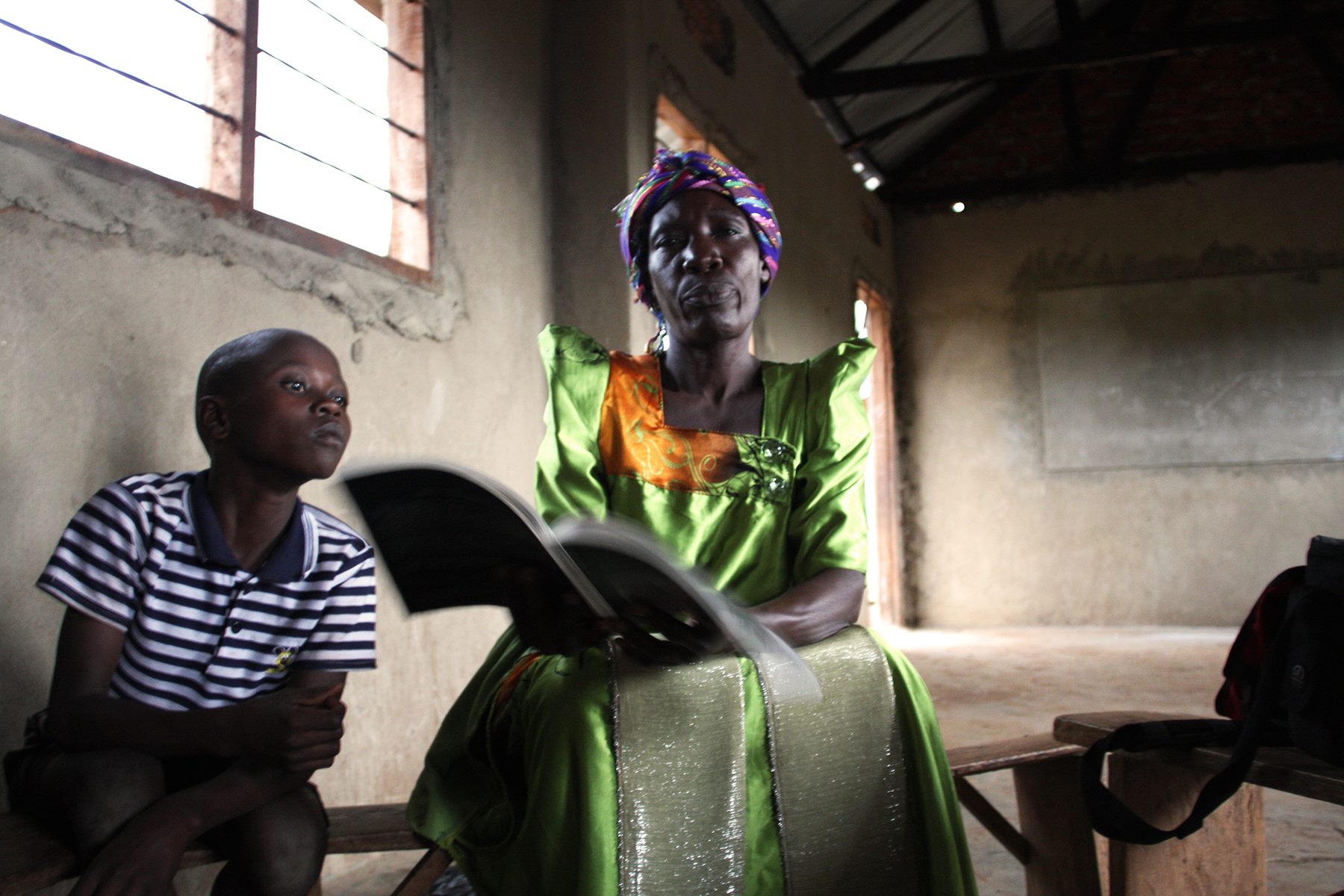
WPC members Mpiima and Jane "learning from the masters". Collective members studied classic, canonized works of fine art black and white photography to deepen their understanding and appreciation of the art of photography. In return, their photographic skills were strengthened and their breadth of knowledge about the possibilities of the camera as a tool for expression widened.

As in the previous slide, here are two WPC members-- Atheino Vena and Waiswa John, "learning from the masters". They are studying photographic prints published in John Szarkowski's 20th Century classic The Photographer's Eye.

Project Director Louise Contino stands before all of the film processing equipment and supplies. Without a proper darkroom or adequate temperature control, film processing for this project was always done in an improvised and makeshift way. Sometimes it was developed in the village, other times in Louise's backyard in the city Kampala, or other times while on the road in hotel bathroom to friend's kitchen. It was a labor of love.

Proof #1- film can be processed anywhere!

Proof #2- film can be processed anywhere!

Film processing in Louise's front yard in Kampala. Proof #3- film can be processed anywhere!

Work in progress -- drying film.

Louise showing the WPC and visitors the photographs that were developed from their most recent rolls of exposed film.
Each week the WPC would meet on Mondays for workshop lesson and on Fridays for a critique. In the meantime, Louise Contino, would manually process and develop the rolls of film that each member had shot throughout the previous week in response to the previous lesson. After each roll of film was developed and dried, Louise would digitally scan each negative into a small film scanner and create digital images from each negative. These pictures would the be brought to the WPC in Wanteete each Friday for critique.

Project Director Louise Contino facilitating the WPC in their first workshop in hand-processed film development.
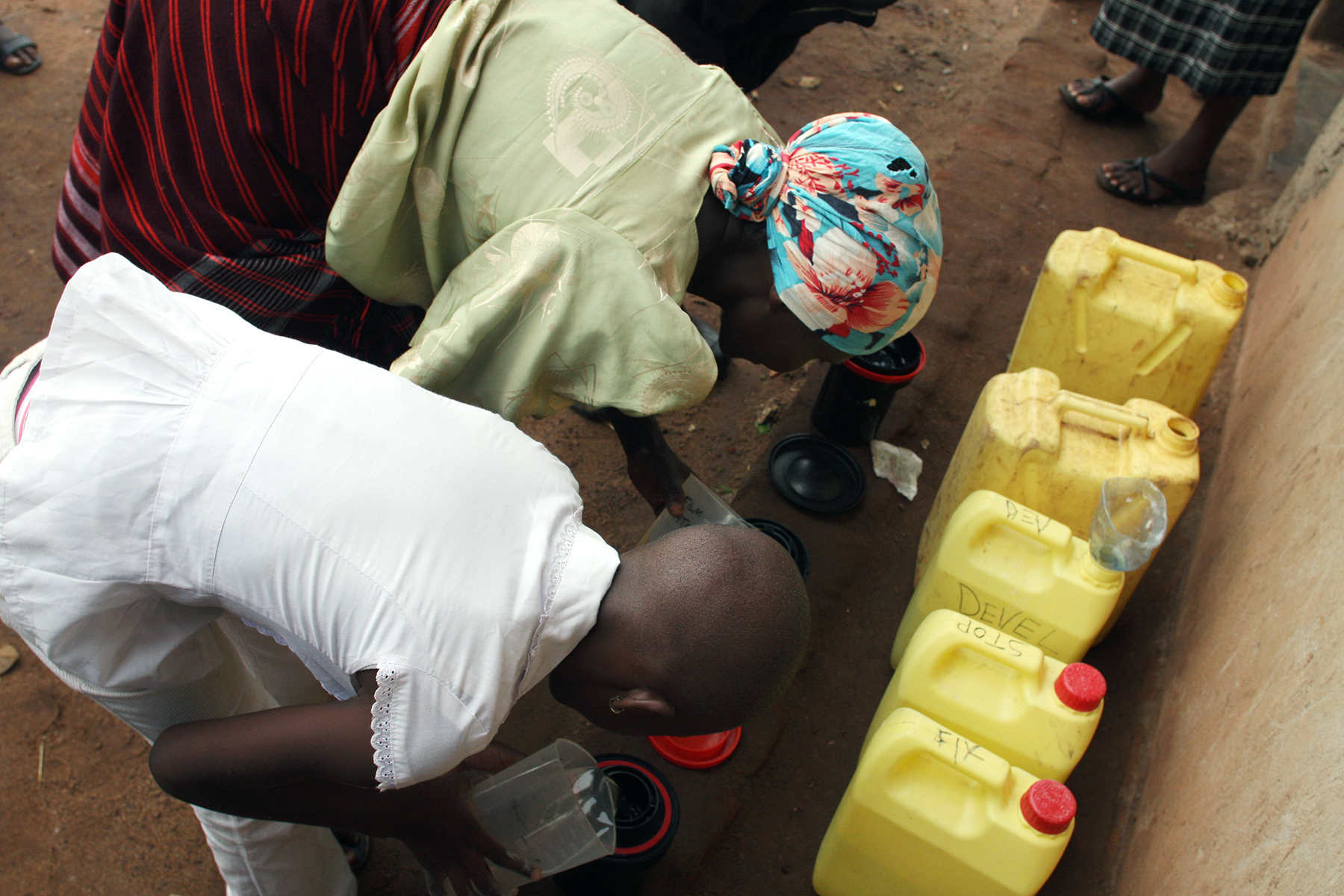
We used "jerry cans" (empty containers that once held cooking oil) to contain the chemical solutions needed to develop film (developer, stop, fixer and permawash). Here you see members of the WPC pouring the chemical washes into their light-safe film developing tanks for their first time.

Developing film.


Louise Contino teaching the WPC how to properly agitate their film during the development process.


Washing the film after the developing process is over. Due to the lack of running water we did the "quick wash" system and filled large jerry cans with water and did 20+ rinse washes.

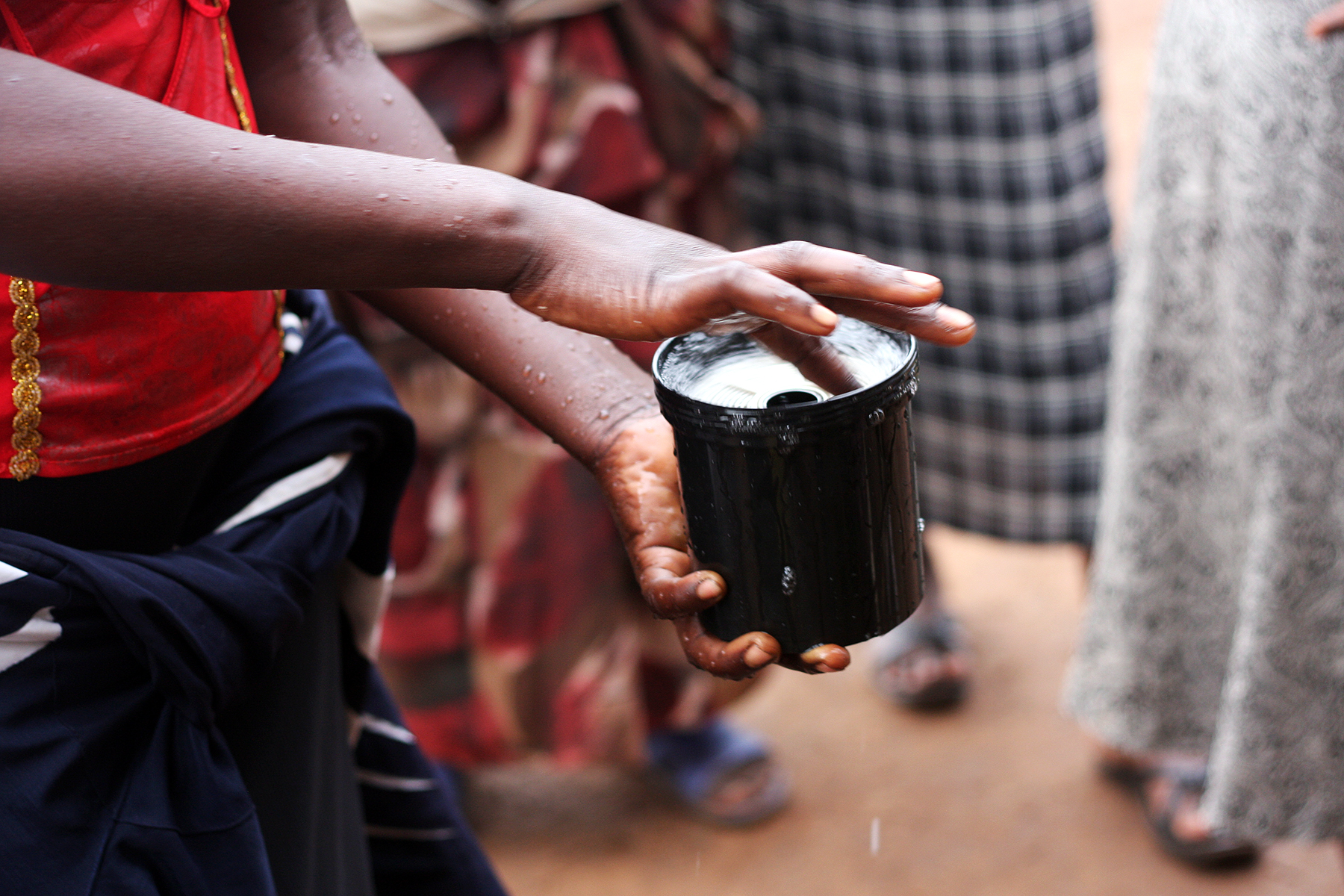
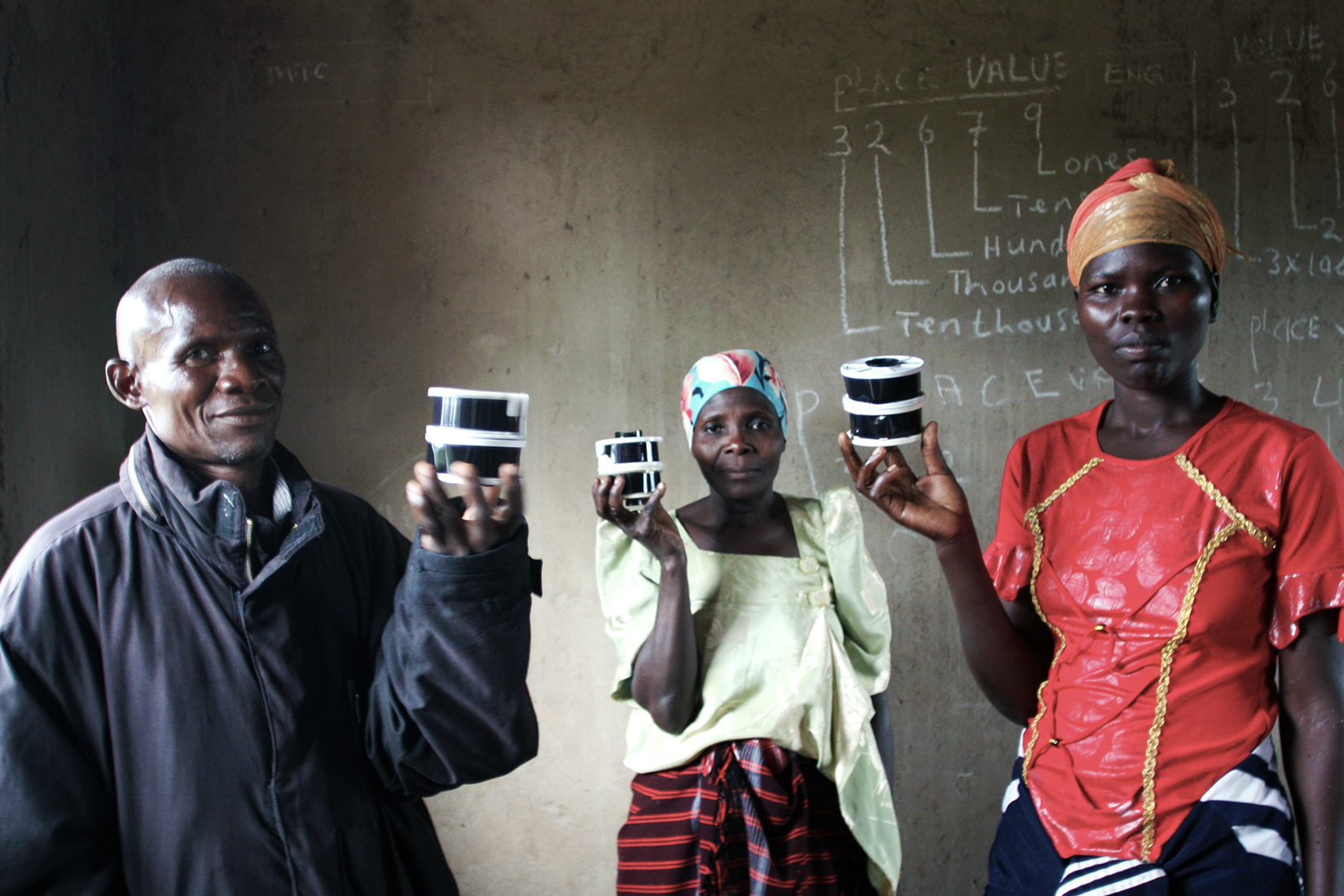
The film developing is complete. Success!


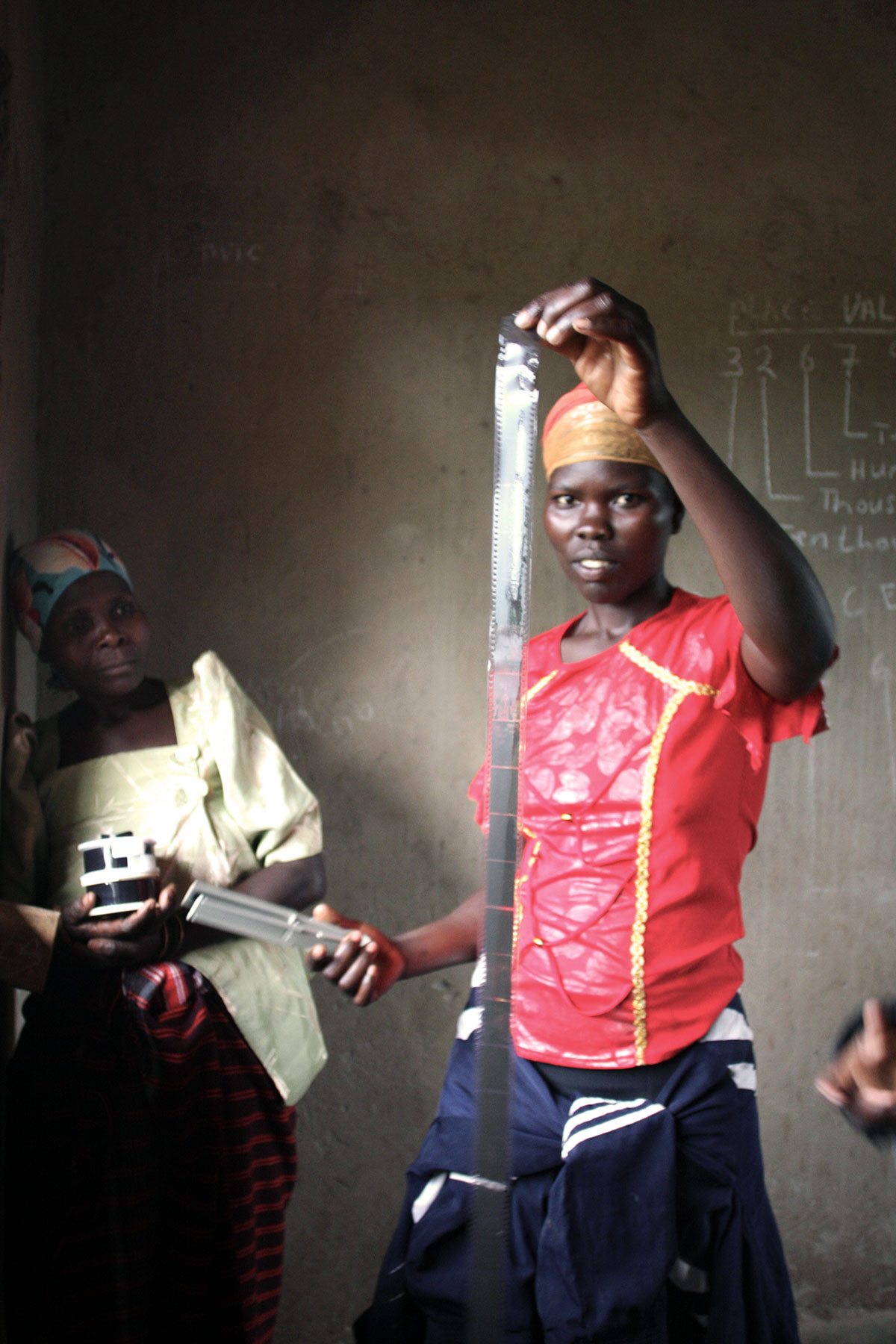



WPC President Waiswa John pulling his first roll of film tha the personally developed off the reel to dry.

After all the film was developed the WPC would then reconvene and go through the process of archival methods to store the film properly, and do an inital read on their negatives to understand which pictures the had made were successful and which ones needed improvement.

Learning to look at film negatives.

The WPC would gather in the Junior School classrooms designed and managed by their local CBO (community based organization) BESO Foundation. Here the group is looking at their negatives, which they just hand developed for their first time. The magic of film nestles in this important moment.

The WPC would gather in the Junior School classrooms designed and managed by their local CBO (community based organization) BESO Foundation. Here the group is looking at their negatives, which they just hand developed for their first time. The magic of film nestles in this important moment.

WPC member Robinah catching the eye of Louise Contino as the film review process is documented.

Looking closely. Learning to look critically.

The magic of film photography at work!

Using a loupe to look even more closely . . .

WPC member Anyango Florence looking at her photographs in her home and selecting which ones she wishes to exhibit in the permanent collection.

One of the greatest things that this project accomplished for all participants was to strengthen community ties and nurture new and old friendships. Featured here are two WPC members, Nalongo Bukenya and Achieng Margaret (from left to right), posing for the camera after a Picturing Wanteete workshop.

The WPC gathered together for a group critique session. Louise would print out 4"x6" copies of the WPC's digitally scanned negatives and bring them to class for review and critique.

What was supposed to be a personal meeting with one WPC member would often turn into a big community sharing session because so many community members of Wanteete were engaged with this self-expression project. People in Wanteete were fascinated by the computer screens and camera equipment because most people in the remote rural community had never seen such technology before. Here Louise is reviewing the photos of WPC member Nassali Marriam with her (she is featured in the pink head cover), and all of Nassali's and the neighbors' children have come to watch the work appear on the computer screen as well.

Project Director Louise Contino facilitating one of the final workshops where each WPC member was given copies of their images and asked to provide a caption for each photograph they selected for exhibition that states why they choose to take that particular image and/pr what it means to them individually.
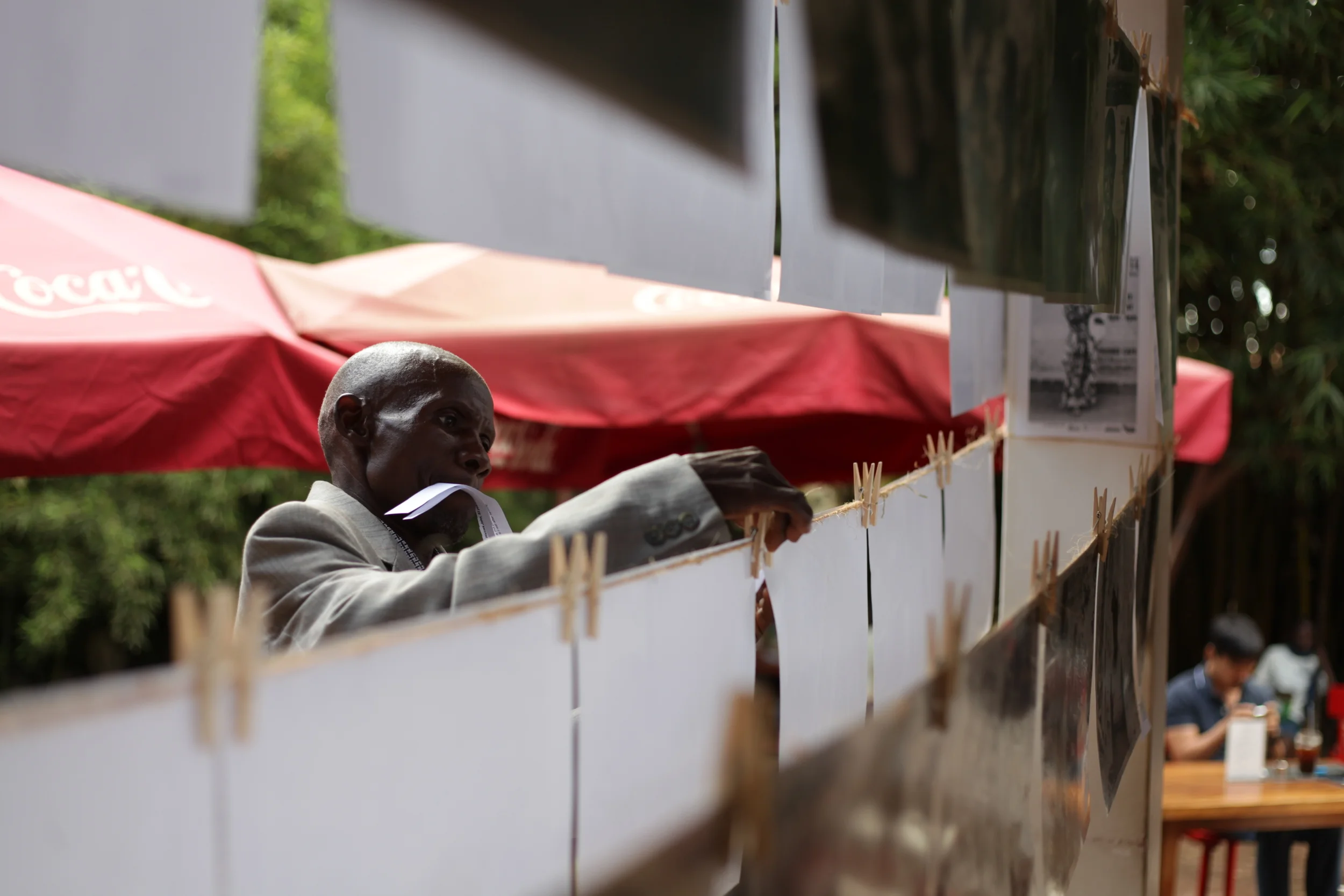
At the close of the project, in May 2014, before Project Director Louise Contino returned stateside to her home in New York City, the WPC members came together and exhibited their work at Prunes Cafe in Kampala, Uganda. This was a wonderful opportunity to bring all of the participants together for a public showcase of their efforts and endeavors. For many in the WPC it was the first visit ever to a big, modern city such as Kampala, their nation's capital. Kampala is about a two hour drive from Wanteete, but for most in the WPC the transportation costs were too high to make the journey. It was exciting to bring everyone together to celebrate their hard work in such an urban and modern location.
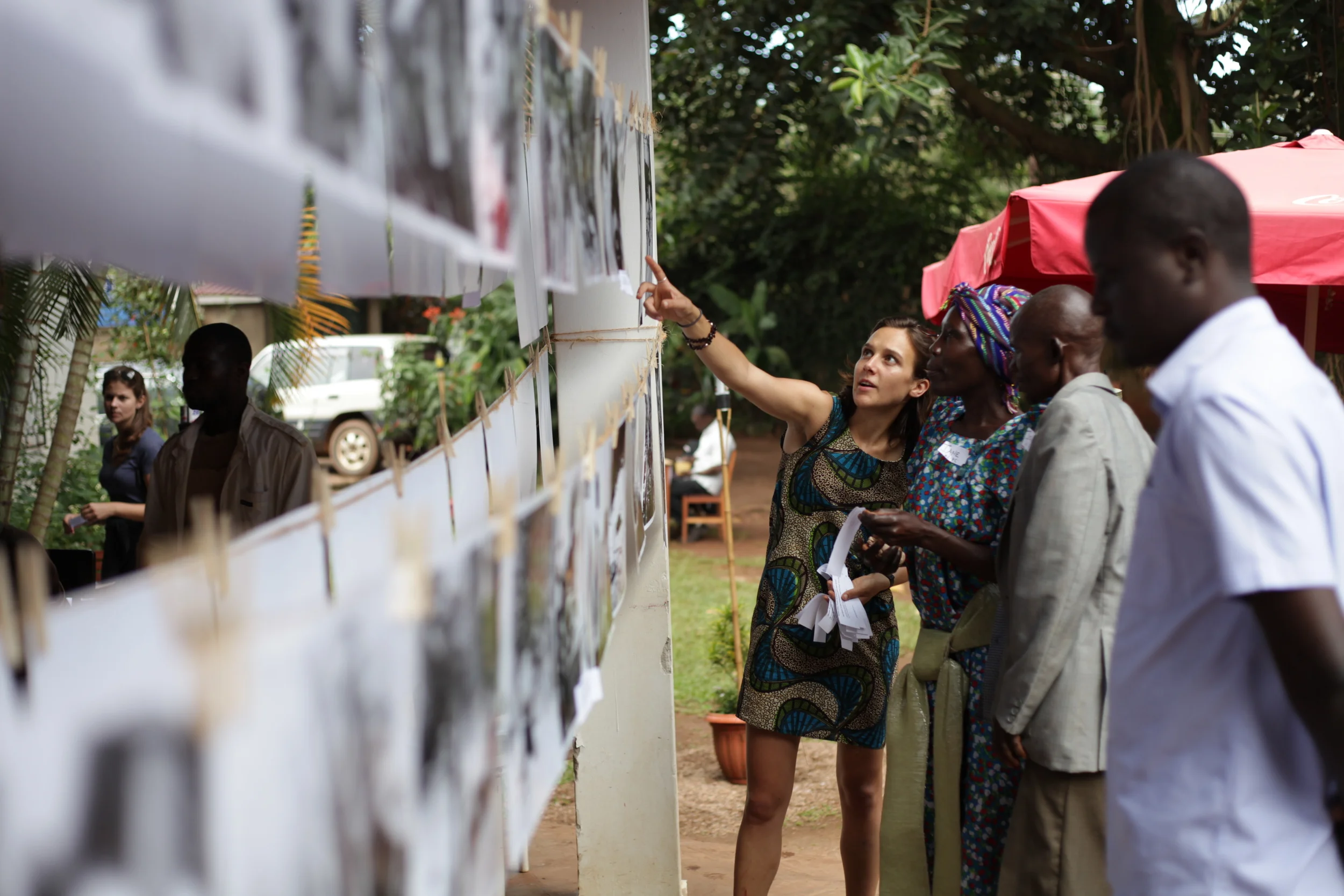
WPC members working with Louise to hang their prints for the show before the crowds arrive.
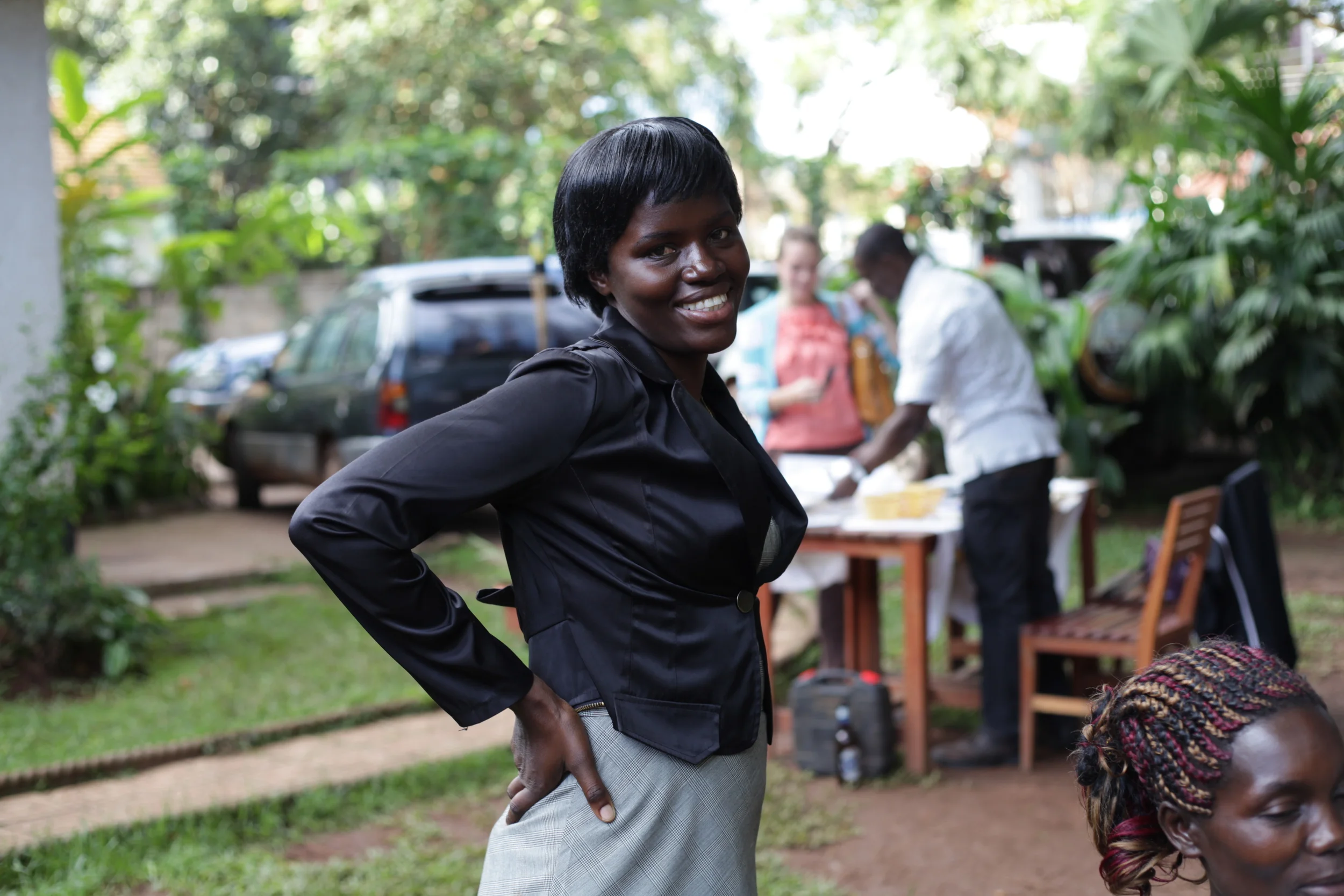
BESO Foundaiton Facillitator and Accountant Esther Nakityo striking a pose at the Picturing Wanteete Kampala Exhibition.
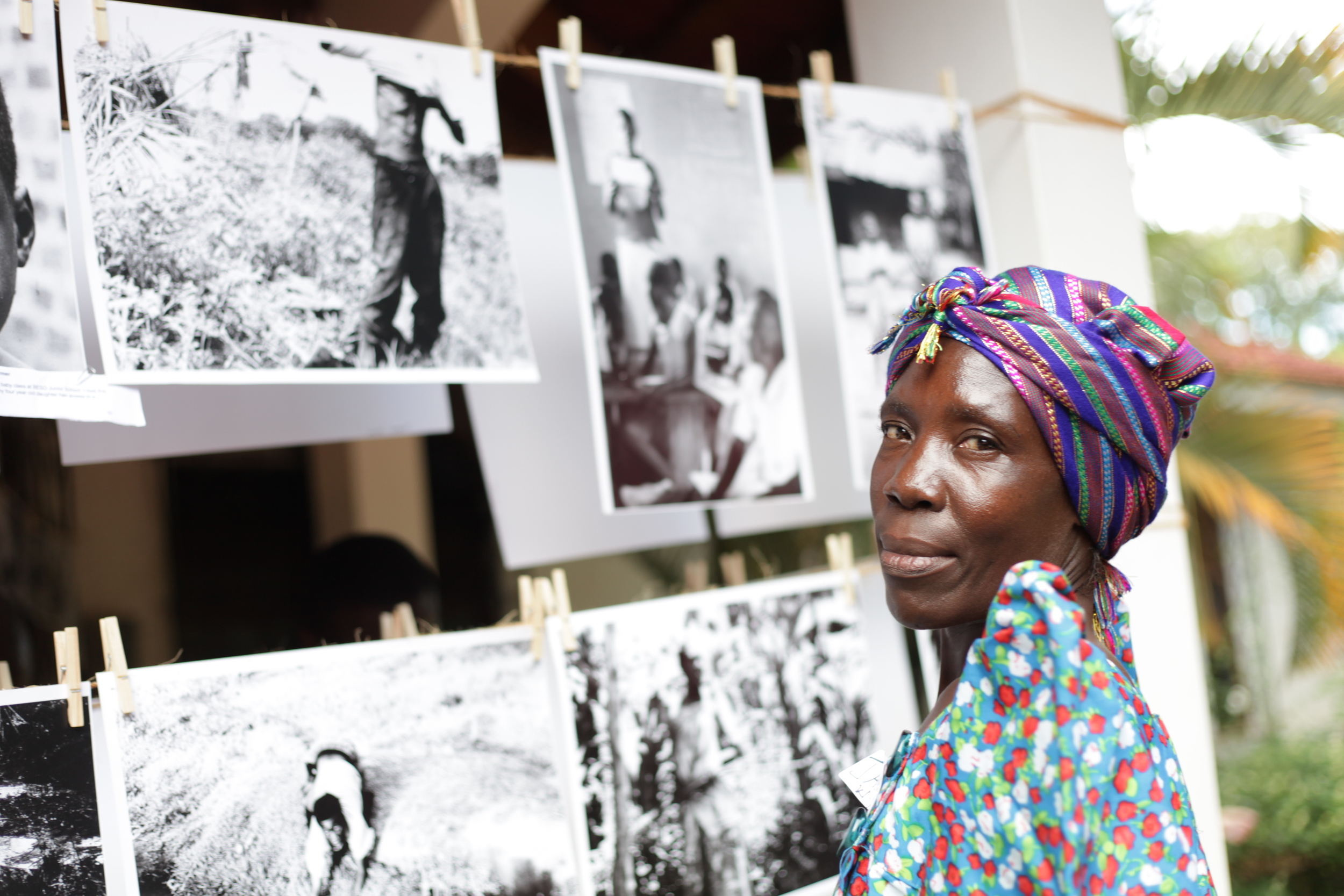
WPC member Athieno Jane in front of the WPC's photographic works presented at the Picturing Wanteete Kampala Exhibition in May of 2014.
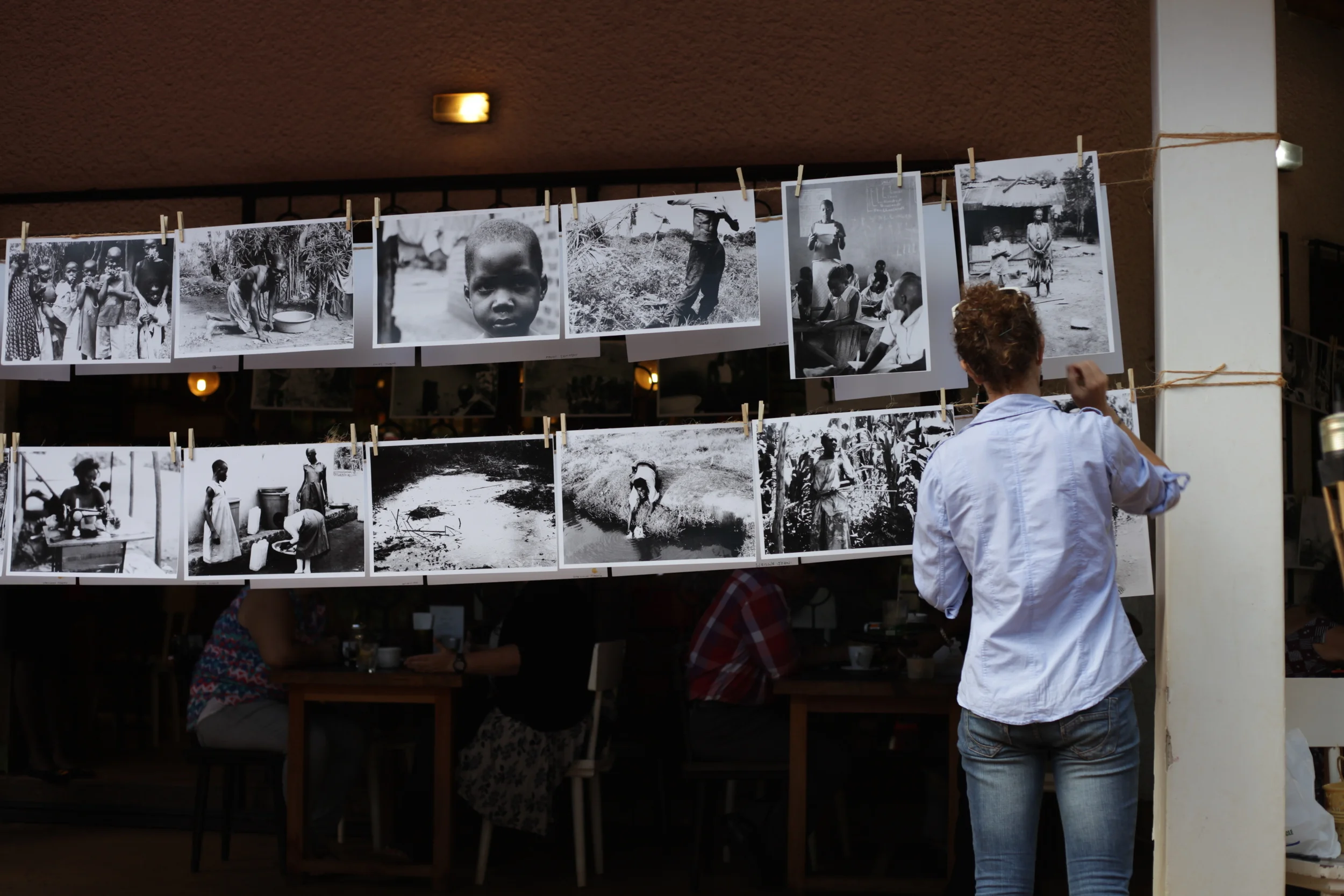
Installation shot of the Picturing Wanteete Kampala Exhibition.

Installation shot #2 of the Picturing Wanteete Kampala Exhibition.
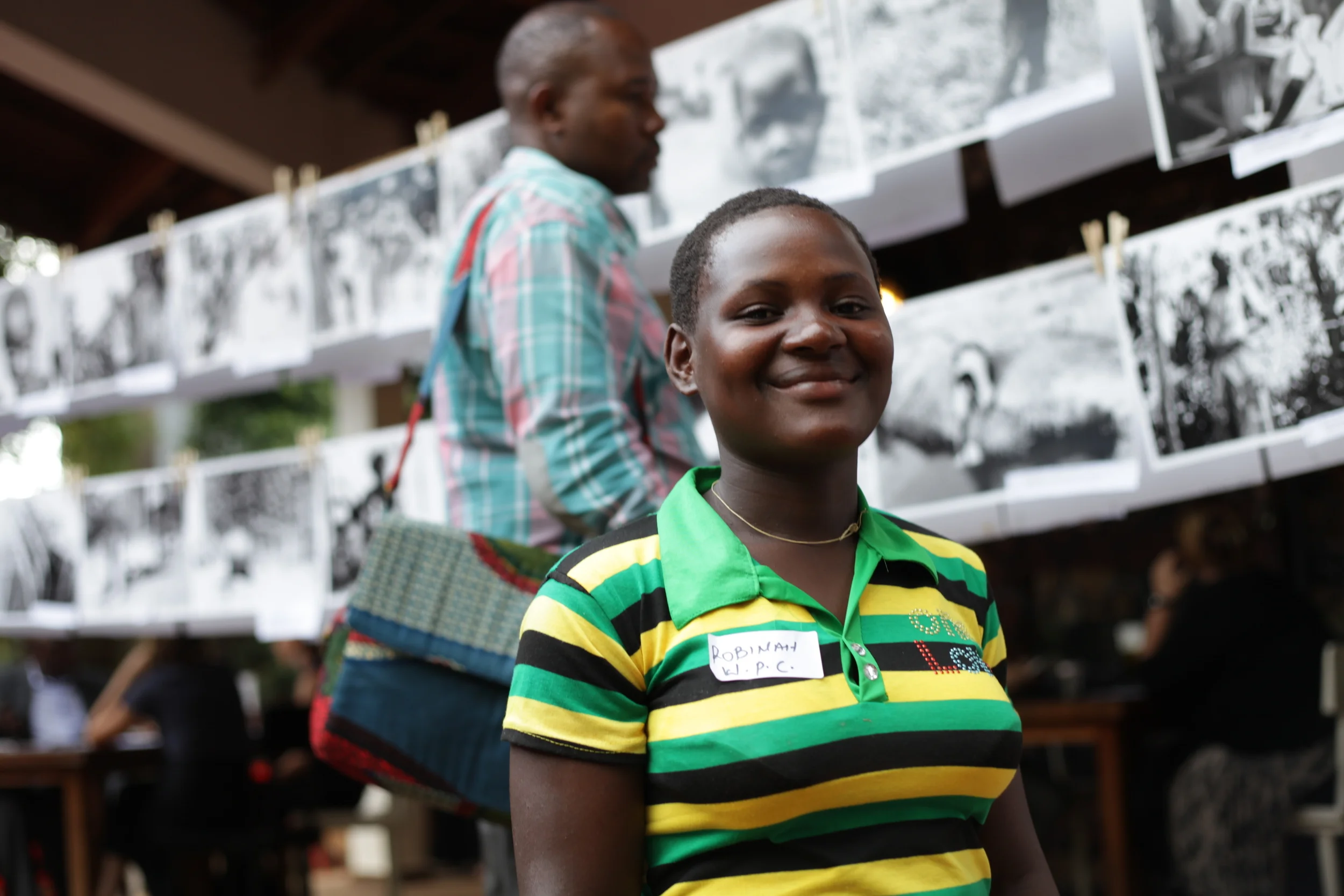
WPC member Robinah Kafuko in front of the WPC's photographic works presented at the Picturing Wanteete Kampala Exhibition in May of 2014.
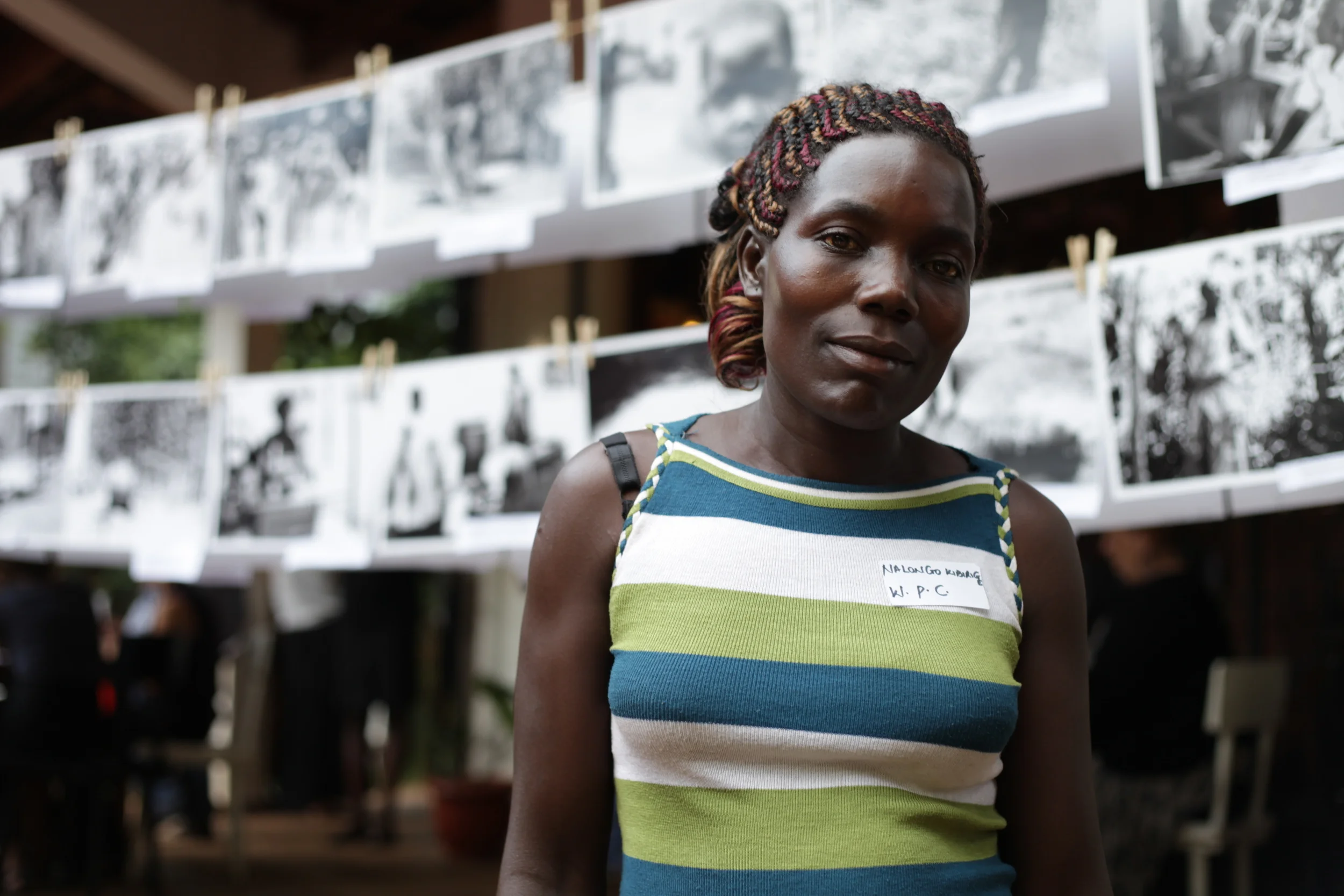
WPC member Kibirigie Nalongo in front of the WPC's photographic works presented at the Picturing Wanteete Kampala Exhibition in May of 2014.

WPC member Achieng Margaret in front of the WPC's photographic works presented at the Picturing Wanteete Kampala Exhibition in May of 2014.

WPC member Athieno Jane and Project Director Louise Contino share some collective joy over the Picturing Wanteete Kampala Exhibition in May of 2014.

WPC member Anyango Florence and Project Director Louise Contino embrace estatically at the Picturing Wanteete Kampala Exhibition in May of 2014.
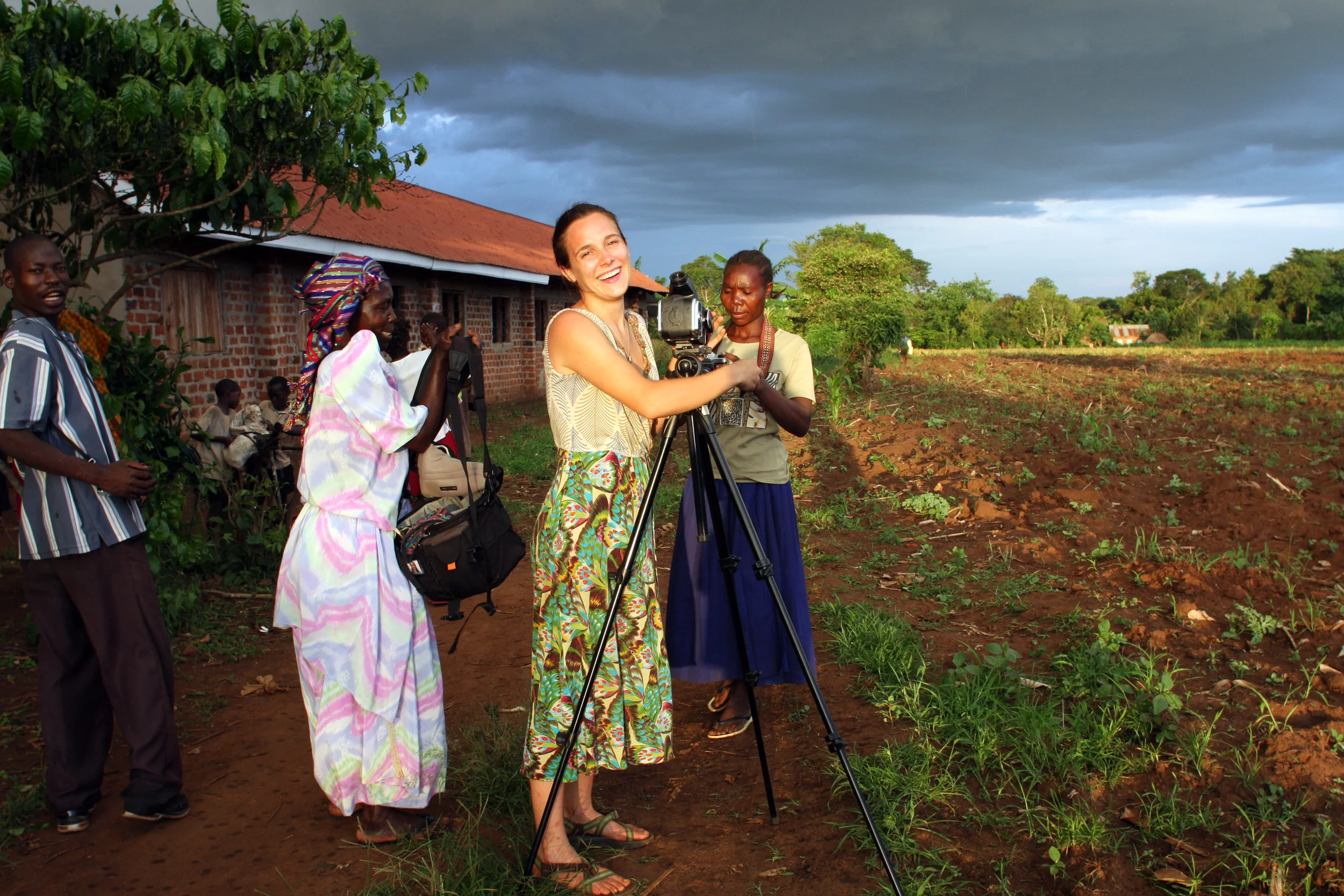
Project Director Louise Contino at sunset in front of her medium format camera that was used to shoot all environmental portraits of the WPC members.
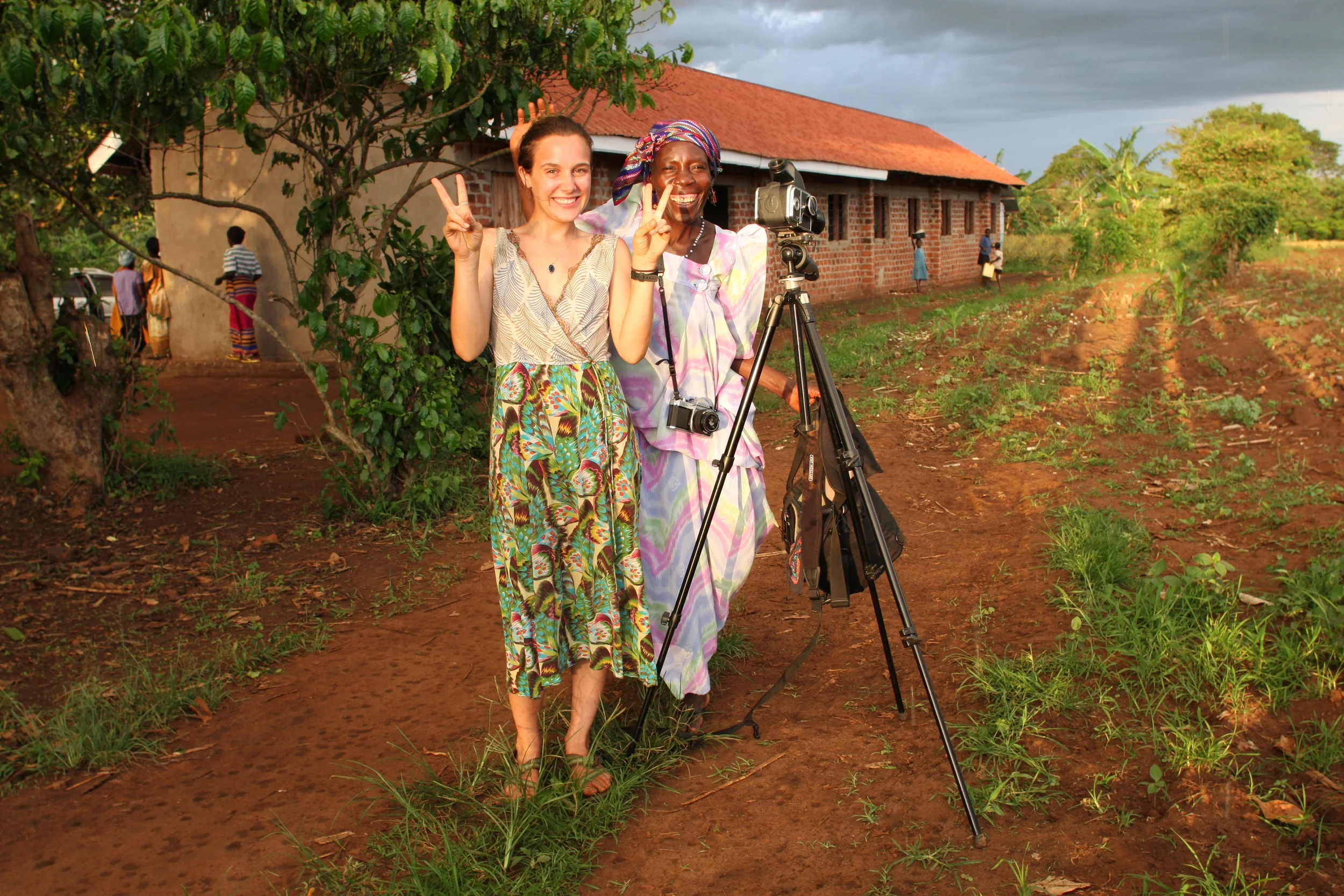
Project Director Louise Contino at your service on the mission to SPREAD LOVE.

The Wanteete Photo Collective (WPC).




































































